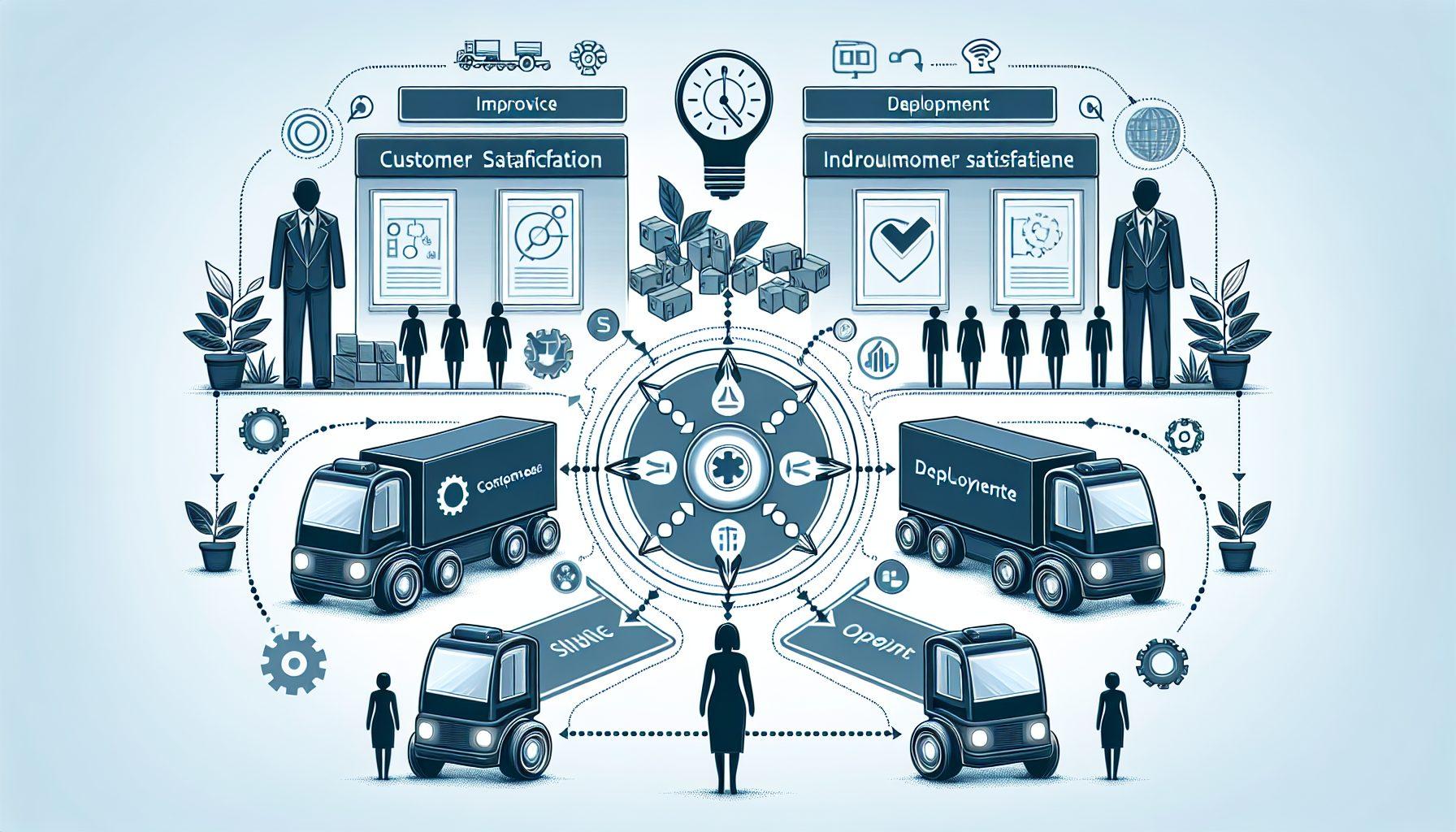Warehouses play a crucial role in modern supply chain management. They serve as distribution centers, storing and organizing products before they are shipped to customers. As e-commerce continues to grow, warehouses are under increased pressure to efficiently handle large volumes of inventory while maintaining high levels of customer satisfaction. One solution that is revolutionizing warehouse operations is the deployment of Automated Guided Vehicles (AGVs).
The Power of AGV Deployment
AGVs are robotic vehicles that are designed to navigate and perform tasks within a warehouse environment without the need for human intervention. These vehicles are equipped with advanced sensors and software that enable them to safely and efficiently move throughout the warehouse, pick up and transport goods, and even interact with other machinery.
By incorporating AGVs into their operations, warehouses can experience a myriad of benefits that directly impact customer satisfaction. Let’s explore some of these benefits in detail:
Increased Efficiency
One of the key advantages of AGV deployment is the significant increase in efficiency it offers. AGVs can operate around the clock, without the need for breaks or rest, resulting in seamless operations. These vehicles can optimize their routes and follow predetermined paths, minimizing the time taken to complete tasks. Additionally, AGVs can handle multiple tasks simultaneously, such as picking up multiple items or delivering goods to various locations within the warehouse. This increased efficiency translates into faster order processing times, which in turn leads to improved customer satisfaction.
Enhanced Safety
Safety is a top priority in any warehouse environment. The deployment of AGVs can greatly enhance safety by reducing the risk of accidents and injuries. AGVs are equipped with advanced sensors that enable them to detect obstacles, people, or other vehicles in their path. They can assess the surroundings and make real-time adjustments to navigate around any potential hazards. With the use of AGVs, the chances of collisions and accidents are significantly reduced, creating a safer working environment for both employees and customers.
Optimized Space Utilization
Warehouses often struggle with limited space and the need to store a vast amount of inventory. AGV deployment can help optimize space utilization and maximize the storage capacity of warehouses. AGVs can efficiently move in narrow aisles and can access heights that may be difficult for humans to reach. This allows warehouses to utilize vertical space more effectively, reducing the need for additional floor space. By making the most of available space, warehouses can increase their inventory capacity, which translates into improved order fulfillment and customer satisfaction.
Improved Accuracy
Order accuracy is a critical factor in customer satisfaction. AGVs can contribute to improved accuracy by reducing human error. With the use of AGVs, the risk of misplacing or mishandling items is minimized. AGVs can precisely locate and pick up items, ensuring that the right products are delivered to the right place at the right time. Additionally, AGVs can integrate with inventory management systems, providing real-time data on stock levels and eliminating the risk of overselling or stockouts. This enhanced accuracy in order fulfillment leads to increased customer trust and satisfaction.
Cost-Effectiveness
Implementing AGVs can have significant cost-saving benefits for warehouses. While the initial investment may be higher, the long-term savings in labor costs, reduced product damage, and improved operational efficiency make AGVs a worthwhile investment. AGVs can perform tasks that would otherwise require multiple human workers, reducing the labor required for mundane and repetitive tasks. Additionally, by minimizing the risk of accidents and product damage, warehouses can save on repair and maintenance costs. The cost-effectiveness of AGV deployment ultimately translates into better value for customers.
In conclusion, AGV deployment offers warehouses a multitude of benefits that directly enhance customer satisfaction. From increased efficiency and enhanced safety to optimized space utilization and improved accuracy, AGVs are transforming warehouse operations. By embracing this technology, warehouses can streamline their processes, meet customer demands more effectively, and ultimately drive success in the competitive e-commerce landscape.
To learn more about AGV deployment and how it can revolutionize your warehouse operations, visit HCO Innovations.

